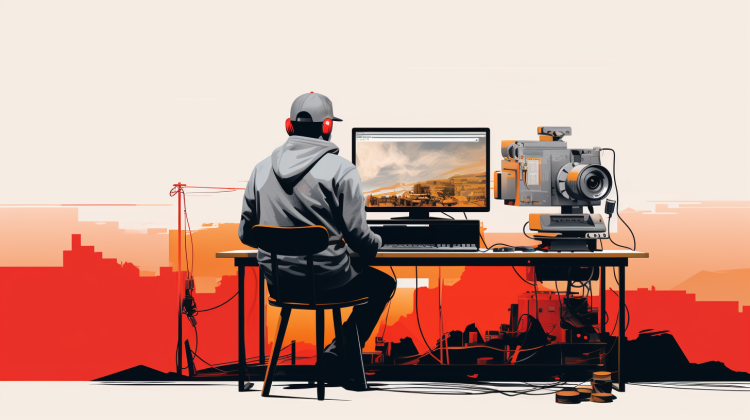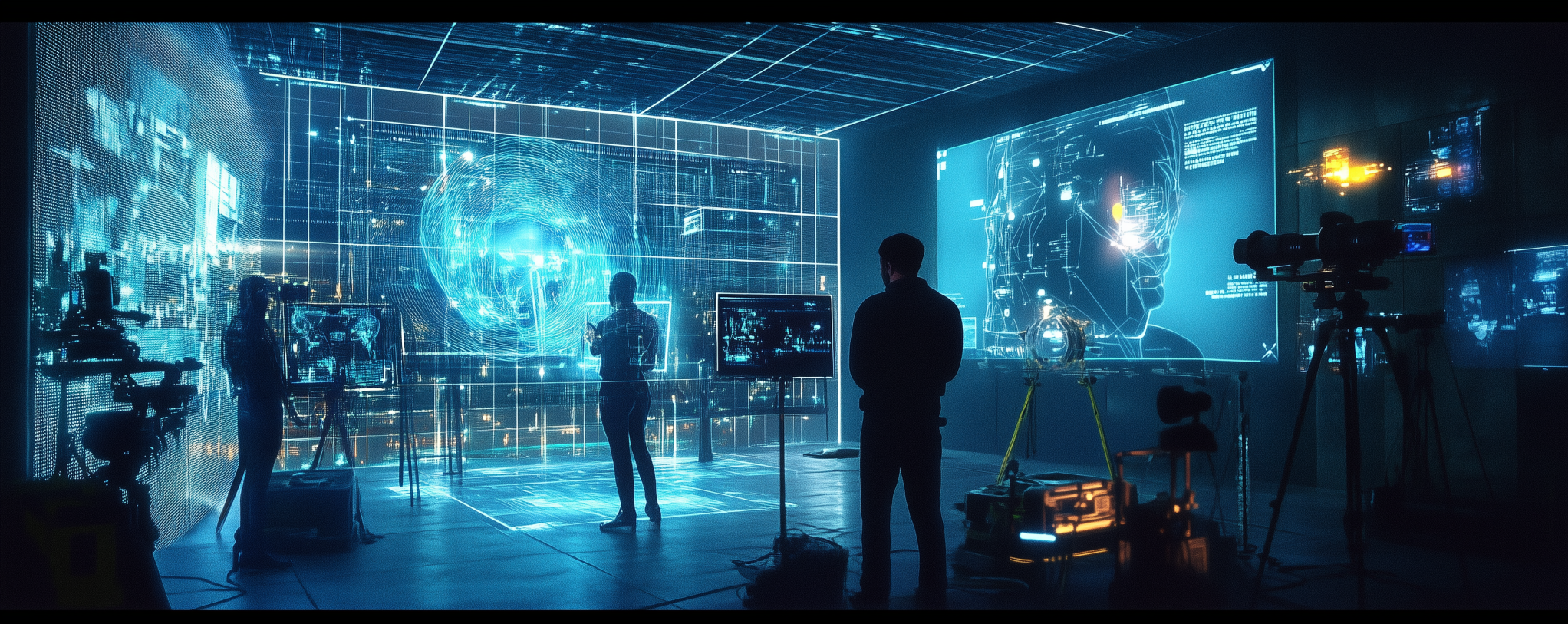Picture this: you’re sitting in a darkened theater, popcorn in hand, as a dragon soars across a vibrant, otherworldly sky, or a superhero defies gravi
Picture this: you’re sitting in a darkened theater, popcorn in hand, as a dragon soars across a vibrant, otherworldly sky, or a superhero defies gravity in a heart-pounding chase through a futuristic city. These jaw-dropping moments don’t just happen—they’re meticulously crafted using cutting-edge Hollywood tools and film technology. From visual effects to camera gear, the magic of modern cinema relies on an arsenal of innovative tech that brings stories to life. Whether you’re an aspiring filmmaker, a VFX artist, or just a movie lover curious about the wizardry behind the curtain, let’s dive into the tools and tech that make Hollywood’s cinematic visuals unforgettable.

1. Pre-Production: Laying the Visual Foundation
Before a single frame is shot, Hollywood’s visionaries use movie production tech to plan every detail. Pre-production is where the seeds of cinematic visuals are sown, and tools like previsualization software (previs) are the gardeners. Previs programs, such as Autodesk Maya or FrameForge, allow directors and cinematographers to create 3D storyboards, mapping out complex scenes with virtual cameras and characters. Imagine a director like James Cameron using previs to choreograph the epic battles in Avatar—every Na’vi leap and spaceship dive was planned digitally before cameras rolled.
Another game-changer is virtual scouting. Using drones and 360-degree cameras, filmmakers capture real-world locations and import them into software like Unreal Engine to build digital filmmaking environments. This lets production designers experiment with lighting and set designs without leaving the studio. According to a 2023 report by the Visual Effects Society, 78% of major Hollywood productions now use virtual scouting to cut costs and boost creativity. These filmmaking equipment innovations ensure that every shot is purposeful, saving time and money while amplifying visual impact.
2. On-Set Sorcery: Cameras, Green Screens, and Motion Capture
When it’s time to yell “Action!”, camera gear and special effects technology take center stage. High-end cameras like the ARRI Alexa LF or RED Komodo are Hollywood’s workhorses, capturing footage in resolutions up to 8K for crystal-clear cinematic visuals. These cameras, paired with anamorphic lenses, create that iconic widescreen look you see in blockbusters like Dune. Fun fact: the Alexa LF was used to shoot Barbie (2023), blending practical sets with VFX tools to craft its whimsical aesthetic.
Then there’s the green screen, a staple of visual effects. By filming actors against a chroma-key backdrop, directors can replace the green with anything from alien planets to historical battlefields. Take The Mandalorian—its innovative “StageCraft” technology uses massive LED screens (called The Volume) to display real-time CGI backgrounds, reducing reliance on traditional green screens. This film technology not only saves post-production time but also helps actors immerse themselves in their environments.
Motion capture is another powerhouse. By placing sensors on actors, filmmakers record precise movements to animate 3D animation characters. Think of Andy Serkis as Gollum in The Lord of the Rings—his performance was captured using motion capture tech and layered with CGI software to create a lifelike creature. Today, tools like Xsens MVN Animate make this process faster, enabling real-time previews on set. These VFX tools bridge the gap between human performance and digital artistry, making the impossible feel real.
3. Post-Production Powerhouse: CGI and Editing Magic
The real alchemy happens in post-production, where post-production tools like Adobe After Effects, Nuke, and Houdini transform raw footage into polished masterpieces. CGI software is the backbone here, allowing artists to craft everything from explosions to fantastical creatures. For instance, Weta Digital used Houdini to simulate the ocean in Avatar: The Way of Water, creating waves so realistic you’d swear they were filmed at sea. A 2024 industry survey revealed that 92% of VFX studios rely on Houdini for complex simulations, highlighting its dominance in special effects technology.
Editing suites like Avid Media Composer and DaVinci Resolve are equally critical. These digital filmmaking platforms let editors cut scenes, adjust pacing, and enhance colors to evoke specific emotions. Imagine a horror film where the editor uses Resolve’s color grading to cast an eerie blue tint over a foggy forest—that’s post-production tools at work. Sound design, too, plays a role in visuals; tools like Pro Tools sync audio with VFX to make explosions feel earth-shaking.
Collaboration is key in post-production. Cloud-based platforms like Frame.io allow VFX artists, editors, and directors to share feedback instantly, streamlining workflows. This tech ensures that every pixel aligns with the director’s vision, whether it’s a subtle lens flare or a city-destroying kaiju.
4. The Future of Filmmaking: AI and Virtual Production
Hollywood’s toolkit is evolving faster than a sci-fi plot twist, with film technology like AI and virtual production leading the charge. AI-powered tools, such as Runway ML, can generate 3D animation assets or enhance visual effects with minimal human input. For example, AI can upscale low-resolution footage to 4K, saving time and budget. A hypothetical indie filmmaker might use AI to create a dragon for their fantasy short, bypassing the need for a costly VFX team.
Virtual production, as seen in The Batman (2022), is another frontier. By blending motion capture, CGI software, and real-time rendering via Unreal Engine, filmmakers can visualize entire scenes during shooting. This movie production tech reduces post-production costs by up to 30%, according to a 2024 Motion Picture Association report. It’s no wonder studios are investing heavily in these Hollywood tools—they’re rewriting the rules of storytelling.
Conclusion: The Art and Tech of Cinematic Dreams
From previsualization software to motion capture, green screens to CGI software, Hollywood’s tools and tech are a symphony of creativity and innovation. These VFX tools and filmmaking equipment empower artists to push boundaries, turning wild ideas into cinematic visuals that captivate audiences worldwide. Whether it’s the roar of a 3D animation dinosaur or the quiet beauty of a perfectly lit scene, every moment is a testament to the power of special effects technology.
For aspiring filmmakers and VFX artists, the takeaway is clear: embrace these movie production tech tools, experiment boldly, and tell stories that resonate. Dive into tutorials on Houdini, test out Unreal Engine, or even tinker with a consumer-grade camera to hone your craft. The same Hollywood tools that built Pandora or Gotham are within your reach—use them to create your own cinematic magic. What world will you bring to life next?



COMMENTS